In Central Quebec, in a farming region located between Quebec City and Montreal, October is the time for harvesting red gold, as farmers reap the rewards of cultivating the cranberry, a 203-year-old fruit.
Quebec is, depending on the year, the second or third largest producer of cranberries in the world (after Wisconsin and Massachusetts). The industry employs hundreds of foreign workers, mainly from Central America. In 2021, nearly 11,000 acres of land will be harvested yielding approximately 230 million pounds of this wonderful fruit. To develop one acre of cranberries, the farmer invests $48,000. 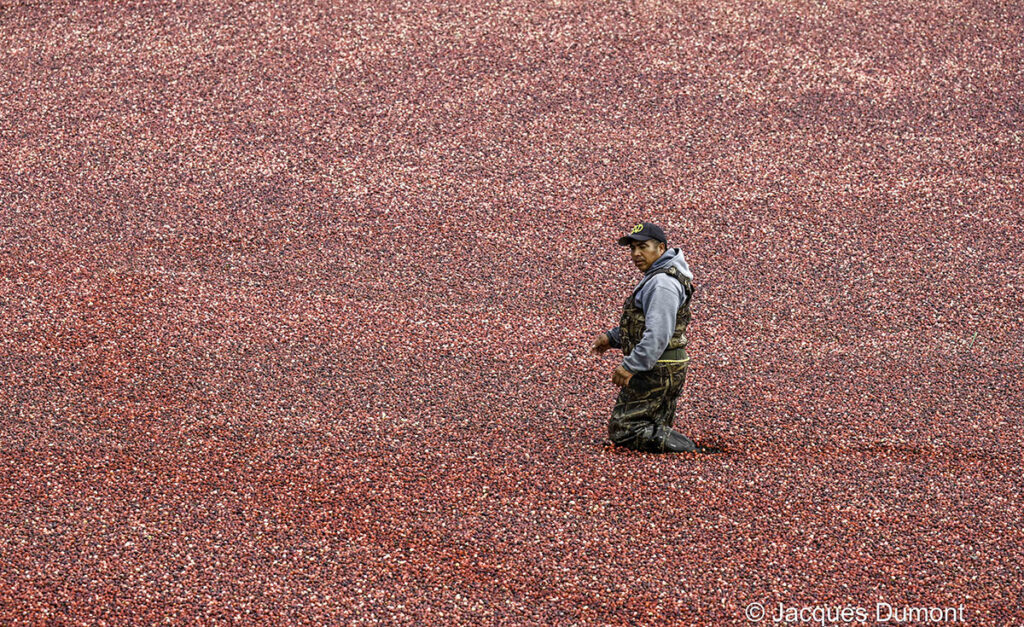
The first cranberry farm in Quebec was created in the late 1930s. Since 2018, one-third of the cranberry farms in Quebec have been operating in full organic mode.
Cranberries are grown in straight fields aligned with the prevailing winds. At the time of harvest, from the end of September to the end of October, the berries are cultivated utilizing many kilometers of underground water conduits arranged in closed circuits (allowing reuse and recycling of the water). The first irrigation raises the water level to ankle depth to unhook the fruit from the vines without damaging the plant, then the berries are separated from their stems – this is accomplished with the help of a mechanical thresher equipped with a GPS guidance system, so it is impossible to miss the fruit. Thanks to its alveoli, the small red berries float on the surface of the water. This harvesting step is called beating the fields.
The second step is to flood the peatlands to knee depth to complete the harvest. It is at this stage that we note the importance of sowing the berry fields according to the prevailing winds, since it is the wind that pushes the floating fruit to one end of the field, which facilitates the harvest. This natural method of gathering the cranberries conserves human energy as the harvest proceeds in harmony with nature. Aided by long floating belts, the harvesters wade through the flooded field, gathering the fruit and directing the crop to the fruit pump, which draws it up and gently guides it into trucks that transport the cranberries to the washing plant, where they will be deposited into pools to be cleaned and then frozen in wooden bins, each containing 1200 pounds of ready-to-eat fruit.
Seeing thousands of bright red berries floating on the surface of the water, kissed by the rays of the sun, and surrounded by the red, orange, and yellow Autumn leaves, we can appreciate one of the most beautiful scenes of the season. What a magnificent canvas for a photographer!



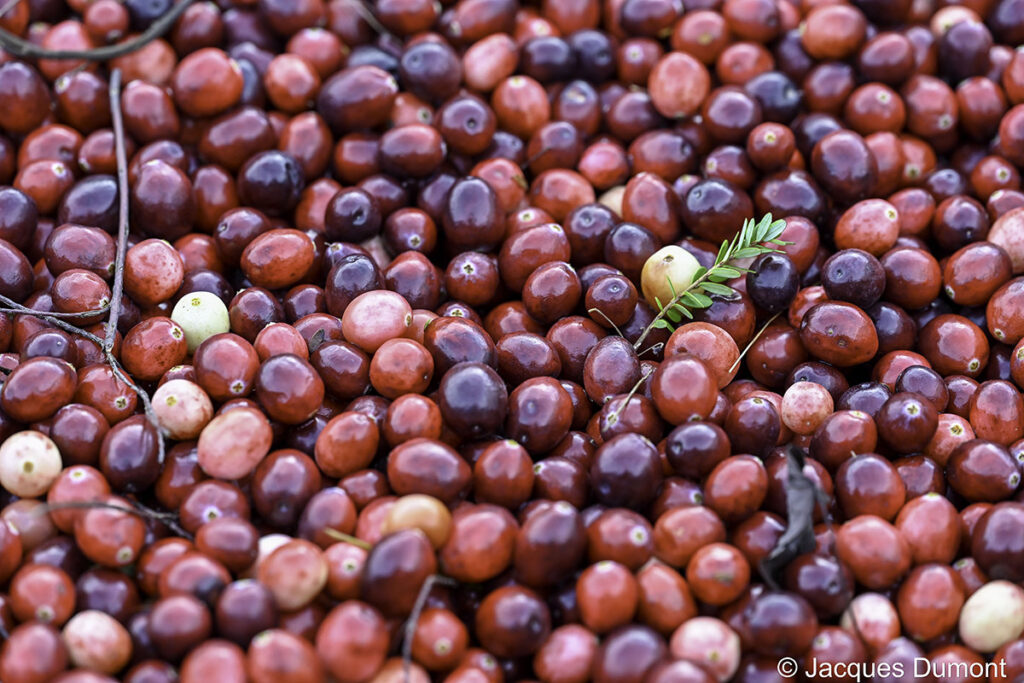
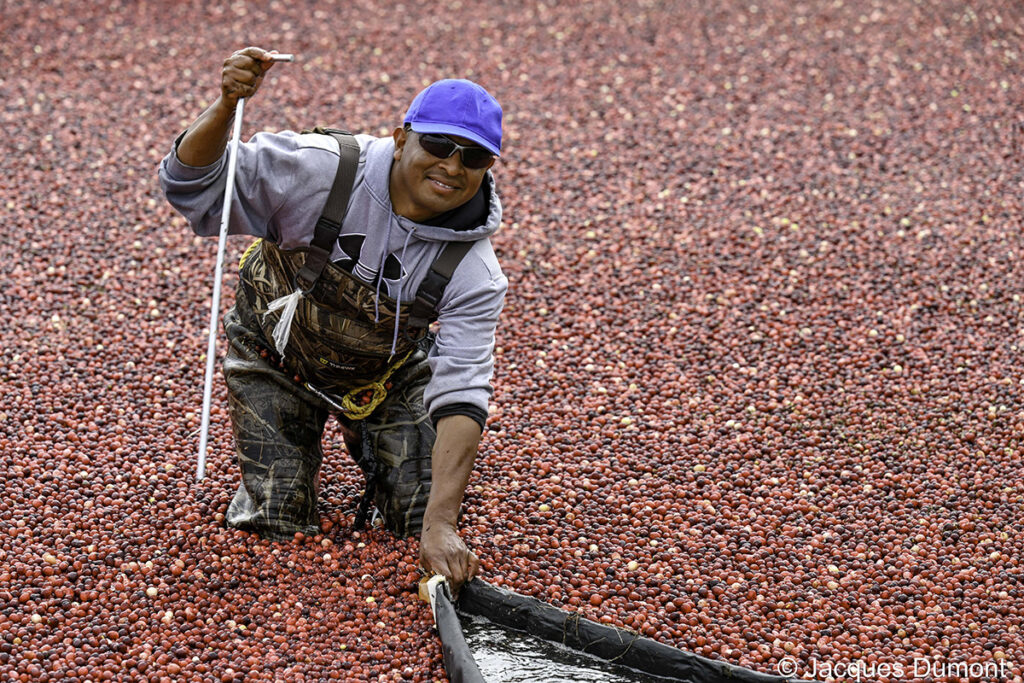
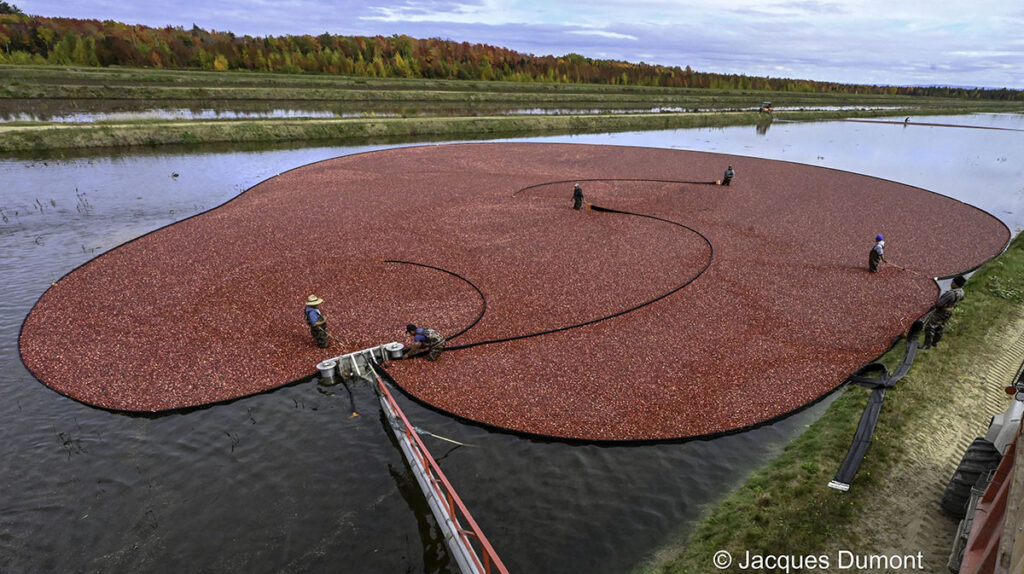
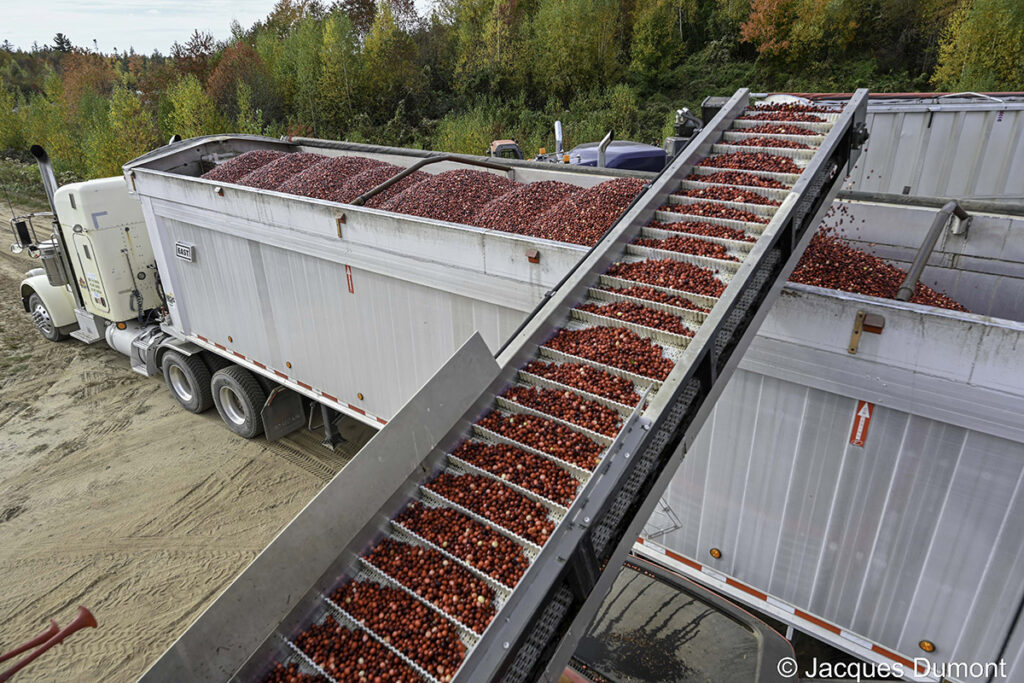
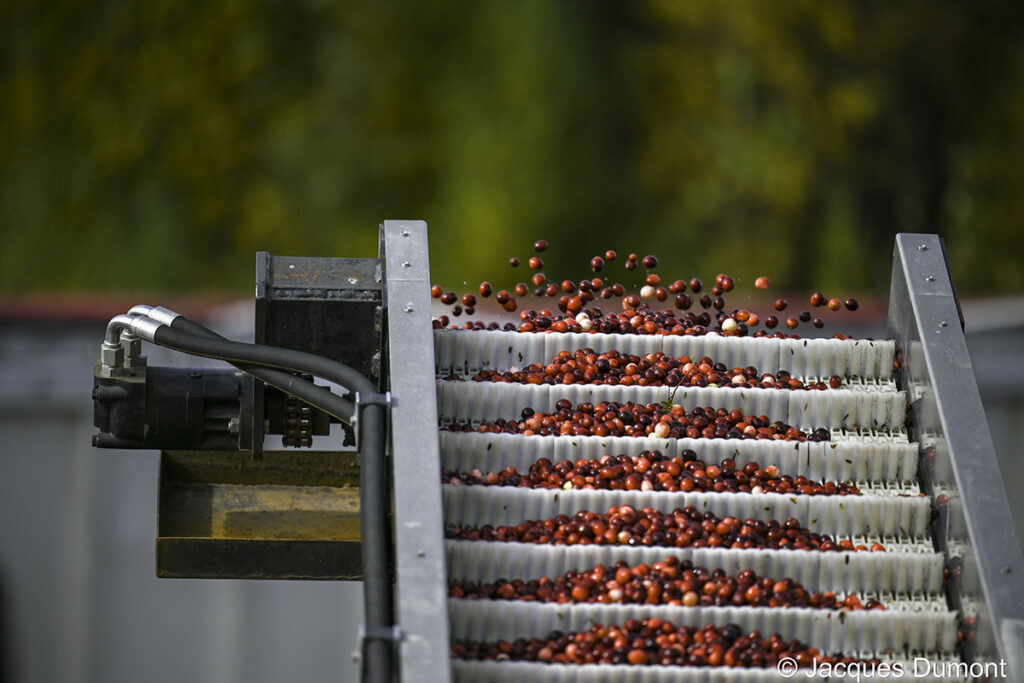
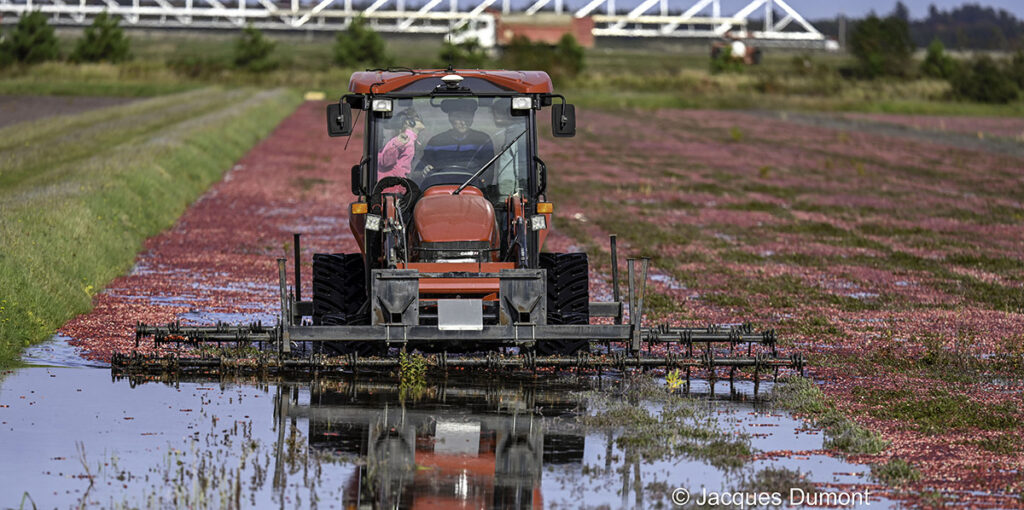
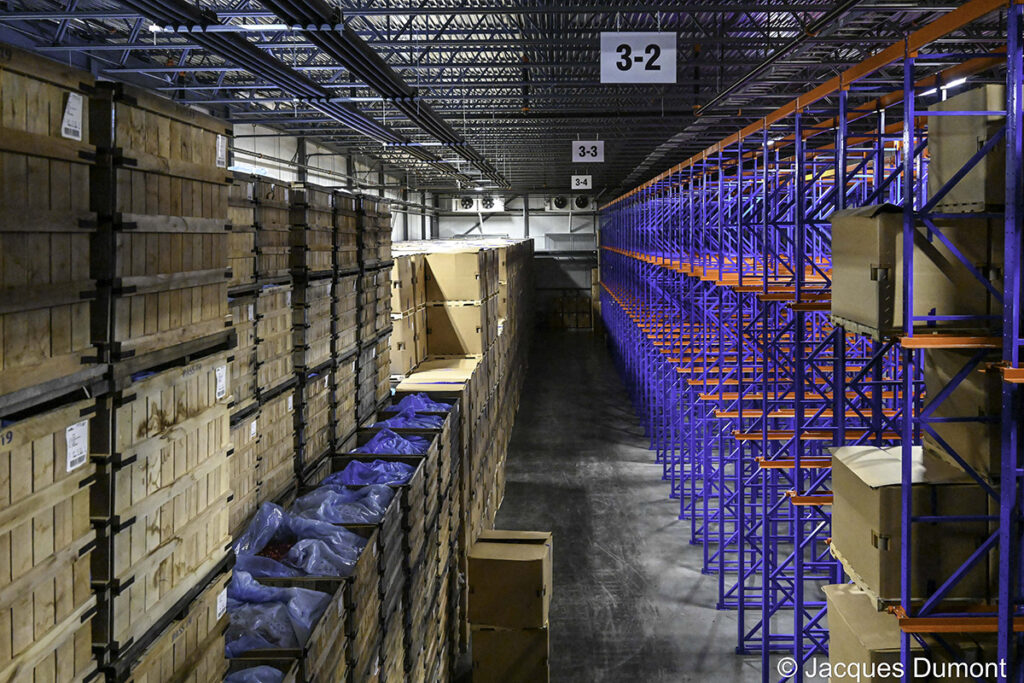
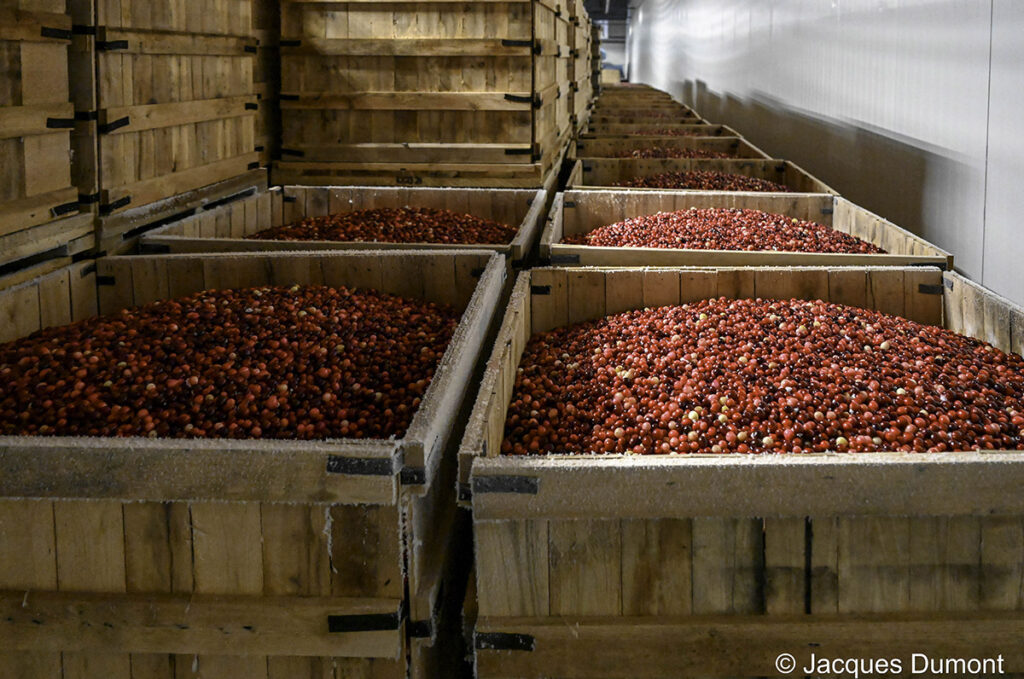
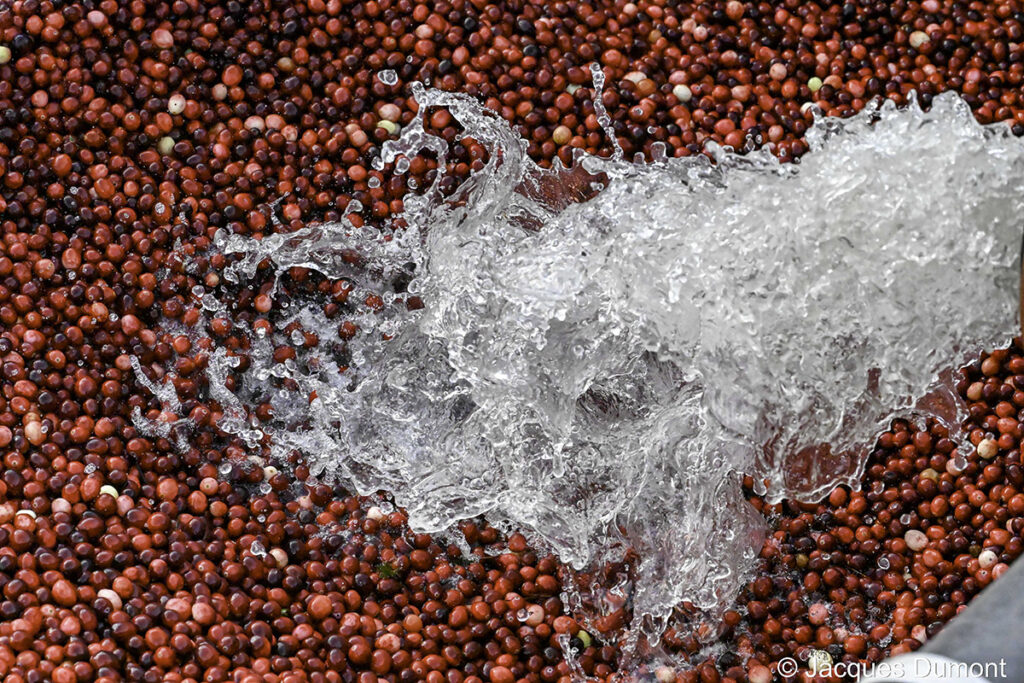






Très beau photoreportage sur la culture de la canneberge. Bravo !
Merci Richard.